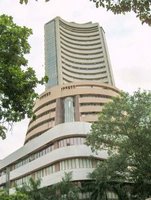Indian Markets are the Best options for FII’s
 BSE Sensex crossed 13,000 points milestone with FII’s, IT and banking companies bullish performance. In October FII’s pumped 7,000 crores into the equities. In the last two years, for FII fund managers, the Indian markets have been one of the best performing in their portfolio, bringing them millions in bonuses. But, since the sensex had risen substantially during the same time, they had diversified their portfolio to medium-sized companies after the larger ones became fully valued. In the sudden global meltdown in May, stocks of medium-sized companies fell the hardest even as the Indian markets fell faster than their counterparts in other emerging markets. But in the recent months with the performance of IT and banking companies the FII’s are showing interest to invest in Indian markets.
BSE Sensex crossed 13,000 points milestone with FII’s, IT and banking companies bullish performance. In October FII’s pumped 7,000 crores into the equities. In the last two years, for FII fund managers, the Indian markets have been one of the best performing in their portfolio, bringing them millions in bonuses. But, since the sensex had risen substantially during the same time, they had diversified their portfolio to medium-sized companies after the larger ones became fully valued. In the sudden global meltdown in May, stocks of medium-sized companies fell the hardest even as the Indian markets fell faster than their counterparts in other emerging markets. But in the recent months with the performance of IT and banking companies the FII’s are showing interest to invest in Indian markets.An analyst with a leading US-based FII says: "Investors kept asking why are we not investing in
Since September 15, 2006, when 30-share BSE Sensex had crossed 12,000 mark, banking and IT stocks have been driving the bull run. While Sensex went up by around 8.4% during this period, the BSE index for banking companies improved by 15.5% and that of IT companies also rose by 12.2%.
Similarly, companies from IT sector also performed well. This is mainly because of better than expected results from large companies like Infosys, Wipro and TCS. Good results by these companies have made the sector attractive. The






